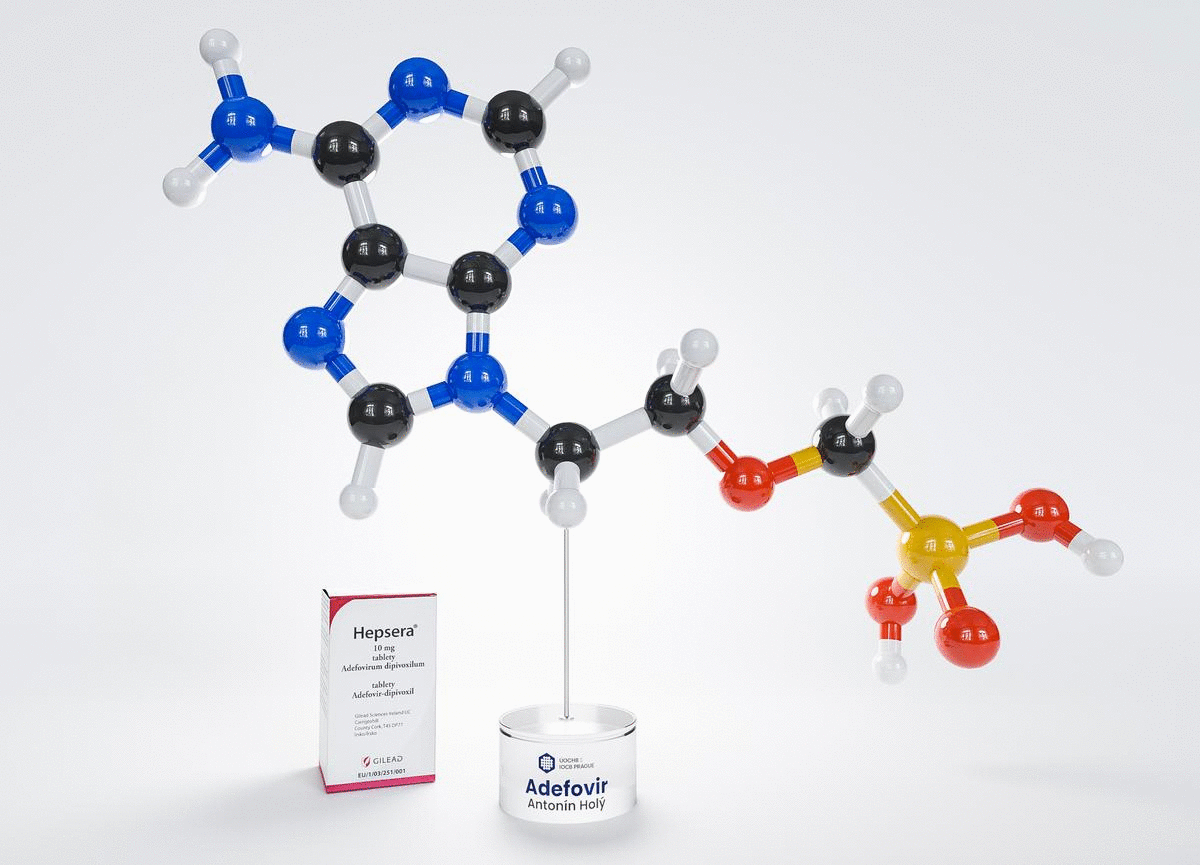Acyclic nucleoside phosphonates

Beginning in 1976, Antonín Holý (1936–2012) collaborated on the development of new antiviral drugs with Erik De Clercq of the Rega Institute for Medical Research at the Catholic University of Leuven, Belgium. In early 1980s, a new class of compounds – acyclic nucleoside phosphonates (ANPs) – was discovered with the aim of developing metabolically stable isopolar and isosteric nucleotide analogues.
The ANP analogues exhibited a unique spectrum of antiviral and antitumor activity.
Thorny path of drug development
Holý and De Clercq submitted the key patent applications for ANPs in the years 1985 and 1986. The license to their utilization was sold to Bristol-Meyers (USA), and preclinical trials commenced in 1987. Extensive research continued at Bristol-Meyers for the next two years. In 1989, Bristol-Meyers merged with another pharma company, Squibb, and the development of ANPs was stopped. Fortunately, the license agreement contained a forethoughtful paragraph: "In the event development is discontinued, all rights must be returned to IOCB together with all materials, obtained results, and documentation."
John C. Martin, director of antiviral chemistry at Bristol-Meyers Squibb, realized the therapeutic potential of these compounds and decided to continue in their development. He raised money and moved his team of 14 researchers to a small biotechnology company in California called Gilead Sciences. Gilead then newly licensed the ANP patents from IOCB and the Rega Institute. Cidofovir and adefovir were selected as the most promising compounds for development. Tenofovir was added later. Finally, four compounds of the ANP group were approved for therapeutic use in human medicine and introduced to the market.
Revolution in HIV a HBV treatment
Drugs based on tenofovir revolutionized therapy for HIV and HBV patients. They have helped save millions of lives and have also dramatically improved the quality of life for AIDS patients. The collaboration of Antonín Holý, Erik De Clercq, and John C. Martin established a long-lasting relationship between IOCB, the Rega Institute, and Gilead Sciences. Royalties from tenofovir licenses paid to IOCB made it possible to completely renovate the institute's campus and purchase cutting-edge equipment for its laboratories.
Moreover, the Gilead Sciences Research Centre at IOCB Prague was established in 2006. Funding from Gilead Sciences helps advance several research projects mainly focused on discovering new medicines.




